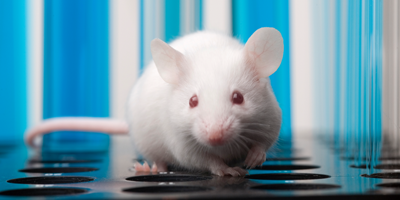Which Animals Are Used
Mice & Rats
 It is undisputed that the vast majority of animals used in biomedical research are mice. However, unlike primates, rabbits, and dogs, mice and rats bred for use in research are not protected under the Animal Welfare Act (AWA), which sets minimal standards for the care, housing, sale, and transport of animals used in research. As a result, it is impossible to know how many mice and rats are used each year for research in the U.S., for what purposes, and the pain and/or distress experienced by these animals, because this data is not gathered or reported by the U.S. Department of Agriculture (USDA). In addition, without the minimal protections afforded by the AWA, researchers can use mice and rats without considering alternatives to their use or minimizing pain and distress.
It is undisputed that the vast majority of animals used in biomedical research are mice. However, unlike primates, rabbits, and dogs, mice and rats bred for use in research are not protected under the Animal Welfare Act (AWA), which sets minimal standards for the care, housing, sale, and transport of animals used in research. As a result, it is impossible to know how many mice and rats are used each year for research in the U.S., for what purposes, and the pain and/or distress experienced by these animals, because this data is not gathered or reported by the U.S. Department of Agriculture (USDA). In addition, without the minimal protections afforded by the AWA, researchers can use mice and rats without considering alternatives to their use or minimizing pain and distress.
How Mice and Rats Are Used
Most mice and rats in laboratories have been purposely bred for use in research and testing. Many are available as specific strains to model human disease, express certain genetic traits, or to be pathogen-free. Both are often used in general biomedical research, not to answer a specific scientific question, but rather simply to study how the body and its organ systems work. Mice, in particular, are also used like living test tubes or “bioreactors” to produce monoclonal antibodies, a process that can involve enormous pain and suffering.
Rats are commonly used to test for unintended side-effects of new drugs, as well as in acute toxicity testing that often involves intense sickness and even death. In addition to being used as disease models for atherosclerosis, addiction, and cancer, rats are also used to study neurological disorders and psychological experiments that induce anxiety, depression, and learned helplessness.
The number of mice used in the field of genetic engineering has grown exponentially. Sequencing of the mouse (mus musculus) genome was completed and published in 2002, and since then, scientists have been engaging in every possible genetic manipulation of these animals. A researcher, following the prevailing ‘what if we tried this’ attitude, can custom-order any mutant or genetically engineered strain of mouse desired from any of a number of suppliers. Thousands of animals’ lives are wasted to ‘create’ each strain, and suffering is often inherent in the mutations and genetic abnormalities before the experiments even begin. Mice not manifesting the desired traits are killed.
Mice and rats are housed in shoebox-sized plastic containers that slide into vertical racks so that something that is not much bigger than a bookcase can house hundreds of animals.
